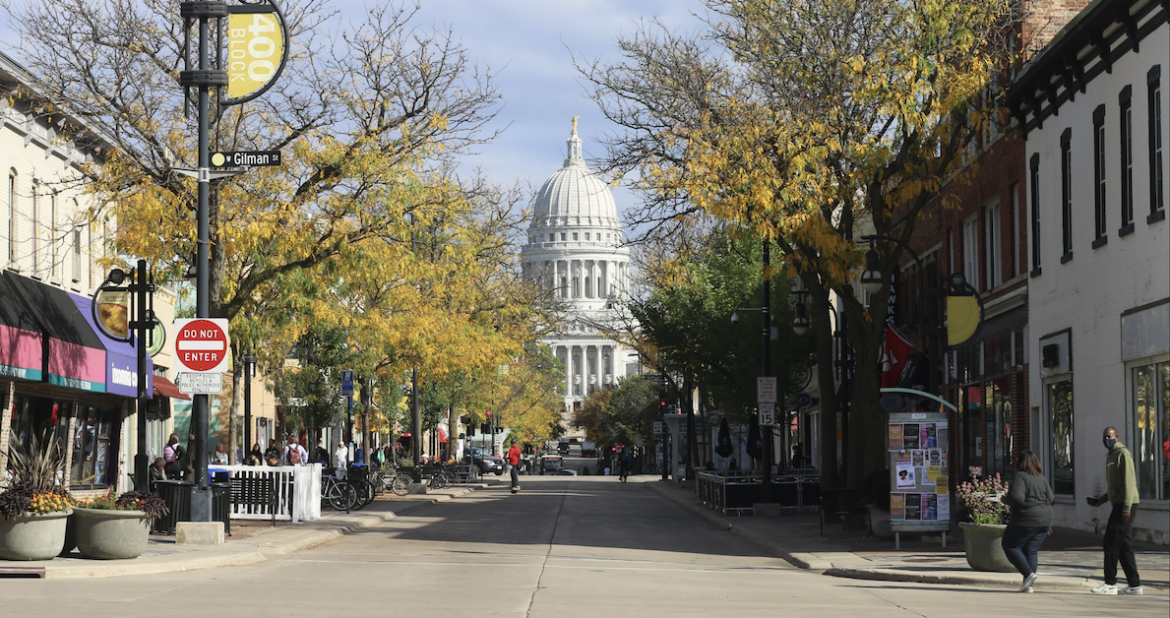The number of labor union members in Wisconsin decreased between 1983 and 2022, with a slightly steeper plummet 2010 onwards, according to data from the Census Bureau’s Current Population Survey.
Between 2010 and 2022, the state’s total number of union members decreased from 354,882 to 186,850 a decrease of nearly 47.4%. Across the prior twelve years, between 1998 and 2010, the drop was 24.5%.
Public union membership alone faced a steeper decline of nearly 61.7% between 2010 and 2022, compared to a 13.6% drop across the previous 12-year span between 1998 and 2010.

Act 10’s impact
According to Michael Childers, a professor in the UW–Madison’s School for Workers, Wisconsin’s 2011 Budget Repair Bill, also known as Act 10, detrimentally impacted union representation in the state.
“Post Act 10, some of the drastic changes that were made greatly curtailed bargaining in Wisconsin in the public sector,” Childers said.
Former Gov. Scott Walker, who was sworn in January 2011, passed Act 10 on June 29, 2011, to address a projected $3.6 million budget deficit. The act received strong pushback from thousands of protestors who demonstrated around and in the Capitol building in the months leading up to the act’s upholding by the Wisconsin Supreme Court.
Act 10 eliminated the ability of unions to engage in collective bargaining towards general municipal employees’ working conditions, hours and benefits, making it solely lawful to engage in collective bargaining regarding wages. Only public safety employees were enabled collective bargaining rights for hours and conditions in addition to wages.
The act also mandated that unions hold recertification votes annually, with 51% of all eligible employees in the collective bargaining unit voting in favor of union representation for the unit to remain unionized. Furthermore, the 51% includes all eligible employees instead of just the majority of ballots cast, resulting in any no-show counting against the union.
After Act 10’s passing, unions could no longer collect membership dues through a dues checkoff system, meaning that general municipal employees had to pay their membership fees separately instead of directly from their paychecks.
“Wisconsin’s union participation was always higher than the national average up until the passage of Act 10,” Childers said, “and now we continuously lag in terms of the national average union participation. So that’s a pretty clear outcome from the passage of Act 10.”
According to data compiled by the 2022 Current Population Survey, Wisconsin lies below the national average of union members in each state.
“Wisconsin was actually the first state in the nation that legalized public sector bargaining in the United States in 1959, with the labor peace act,” Childers said. “Wisconsin was also the first state to greatly curtail those rights.”
Madison’s labor union landscape
While there’s been an overall decline in the number of union members across Wisconsin over the last three decades, the state’s capital city reflects a different story. Unlike the statewide trend, both private and public union membership has remained almost flat in Madison since 2010, showing a slight increase between then and 2022.
According to David Boetcher, a business agent and referral at the International Brotherhood of Electrical Workers’ (IBEW) Local 159 Madison chapter, Madison’s three major workplaces UW–Madison, the state government and Epic Systems — play a role in creating a stable demand for workers in construction. As a business agent, Boetcher connects both private sector and public sector IBEW members to those jobs.
“The state government in Madison is always going, so there will always be a need to maintain the many buildings that the state government has,” Boetcher said.
“Epic and UW also create an incredible need. That just doesn’t happen in a lot of places. We have around 180 electricians out at Epic right now working every single day.”
Childers acknowledged Madison’s progressive reputation with areas such as labor, but maintained that workers in Madison still face workplace challenges similar to other areas in the state and country.
The workers of Willy Street Co-op, for example, “really had an extended challenge trying to form a union,” Childers said. “They were ultimately successful, but it took a lot of work.”
Childers also mentioned the ongoing yet infrequent negotiations at Trustage, a Madison based insurance agency, and the continuing demands of UW Nurses United to receive better pay for UW nurses.
“I think there’s more general support for people on a picket line, it’s still the same sorts of challenges for workers here in these situations,” Childers said.






